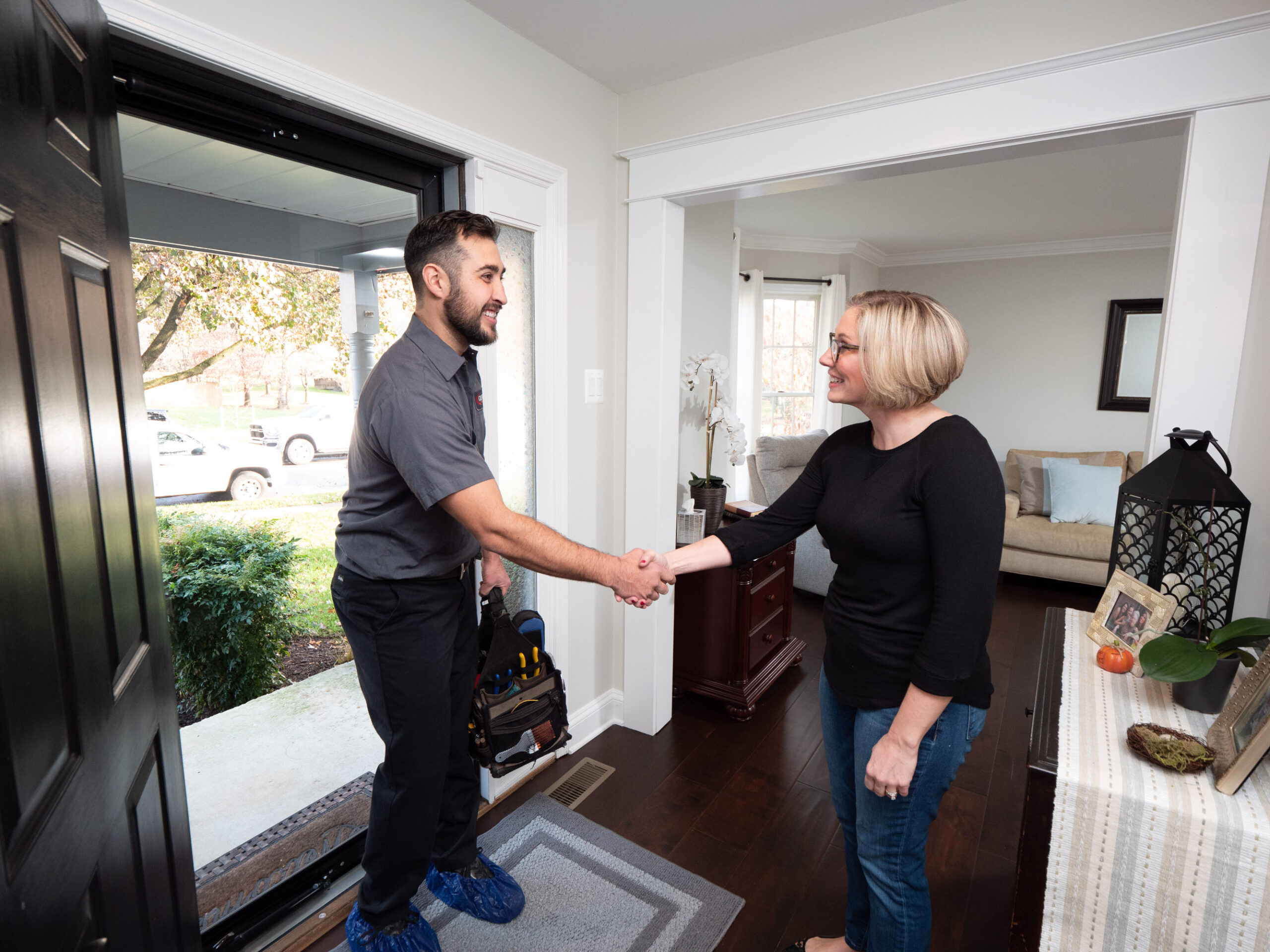When your air conditioner suddenly stops working, it’s easy to panic—especially on a hot summer day in Bowie, MD. The thought of sweltering in the heat while waiting for a repair technician can be stressful, but before you reach for the phone, take a deep breath. Some AC problems have simple solutions that you can troubleshoot on your own, saving you time and money, and reducing the hassle of an unnecessary service call.
From checking the thermostat settings to inspecting the air filter, a few quick steps may be all it takes to get your cooling system back up and running. Grove Heating & Cooling walks you through common AC troubleshooting tips to help you determine whether a quick fix can solve the issue—or if it’s time to call the professionals at Grove Heating & Cooling.

If your home isn’t staying cool, you may wonder what is the first thing to check when the AC stops working. Before calling our AC repair company in Bowie, MD, try these troubleshooting steps to see if you can resolve the issue on your own. Some problems have simple fixes that can restore your cooling system in minutes.
Your thermostat controls when and how your air conditioner runs. If your AC isn’t turning on or isn’t cooling properly, start here:
A clogged air filter can restrict airflow, making it seem like your AC isn’t working properly.
If your AC isn’t turning on at all, it could be a power issue.
Your outdoor AC unit (condenser) needs proper airflow to work efficiently.
Your AC unit may not be getting power due to a blown fuse in the disconnect box (usually located near the outdoor condenser unit).
If your AC is running but not cooling, the evaporator coils inside your indoor unit may be frozen.
Your AC produces condensation that drains away through a small pipe. If this line gets clogged, it can cause your system to shut down.
Blocked or closed vents can prevent cool air from circulating properly.
If you’ve gone through these troubleshooting steps and your AC still isn’t working, it’s time to call Grove Heating & Cooling for AC repair in Bowie, MD. Persistent issues like refrigerant leaks, compressor failures, or electrical malfunctions require expert repair. Our team is ready to diagnose and fix the problem quickly, so you can get back to enjoying a cool and comfortable home.
Yes, if your AC is running but not cooling after you’ve tried these troubleshooting steps, it’s best to turn it off to prevent further damage. When an air conditioner struggles to cool, it could be due to issues like a frozen evaporator coil, low refrigerant levels, or restricted airflow. Continuing to run the system in this condition can put unnecessary strain on the compressor, which is one of the most expensive components to replace. Turning off the AC unit prevents the system from overworking itself.
If your air conditioner still isn’t working after troubleshooting, don’t wait for the problem to get worse—contact Grove Heating & Cooling for expert AC repair in Bowie, MD. Our experienced technicians will quickly diagnose the issue and get your system back to keeping your home cool and comfortable.
Whether it’s a refrigerant leak, an electrical problem, or a failing component, we have the skills and tools to fix it right the first time. Don’t let the heat take over—schedule your AC repair with us today!
